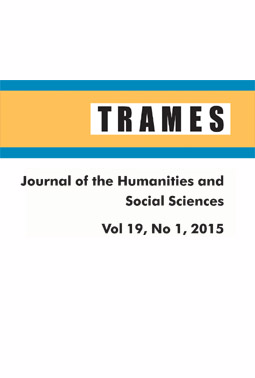SPREAD OF FOLKLORE MOTIFS AS A PROXY FOR INFORMATION EXCHANGE: CONTACT ZONES
SPREAD OF FOLKLORE MOTIFS AS A PROXY FOR INFORMATION EXCHANGE: CONTACT ZONES
Author(s): Yuri E. BerezkinSubject(s): Cultural history
Published by: Teaduste Akadeemia Kirjastus
Keywords: folklore databases, folklore indexes, interaction spheres, cultural borders, Eurasian folklore
Summary/Abstract: The aim of this paper is to reveal patterns of areal spread of folklore motifs in Eurasia and to understand their rationale. The distribution of 615 motifs related to adventures and tricks according to 339 Old World traditions was statistically processed using factor analysis. Tendencies in the areal spread of motifs are interpreted as proxies for the intensity of information exchange between people. Two regularities in distribution of motifs deserve attention. Western Europe and the Mediterranean with adjacent Africa are contrasted with the Caucasus, Central Asia and Mongolia with adjacent Siberia. Finnish, Estonian, Latvian, Lithuanian, Byelorussian and Ukrainian traditions are strongly “European”, the folklore of the Crimea Tatars and especially of the Bashkir is strongly “Asiatic”, the folklore of the Gagauz, Volga Tatars, Mari, Udmurts and Komi moderately “Asiatic”, the Russians, the Setu, the Karelians and the Mordvinians are slightly on the “European” side while the Chuvash are slightly on the “Asiatic” side. Other set of motifs contrasts Siberian, Eastern European and Baltic traditions with the Mediterranean – South Asian ones. The northern set of motifs seems to have origins as deep in time as the early Holocene. The southern one largely correlates with the spread of Islam but can have some roots in the early civilizations of Western Eurasia.
Journal: TRAMES
- Issue Year: XIX/2015
- Issue No: 1
- Page Range: 3–13
- Page Count: 11
- Language: English

